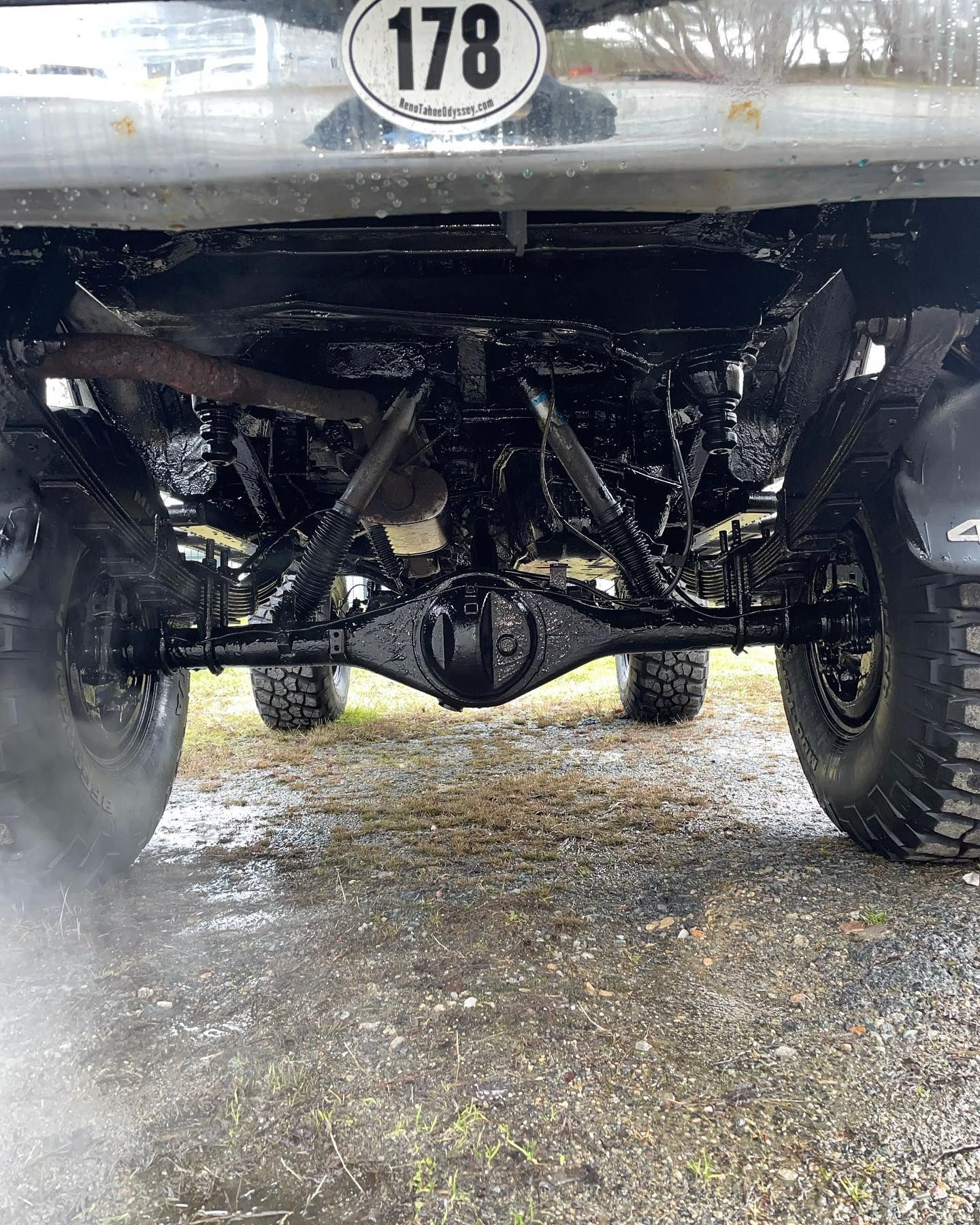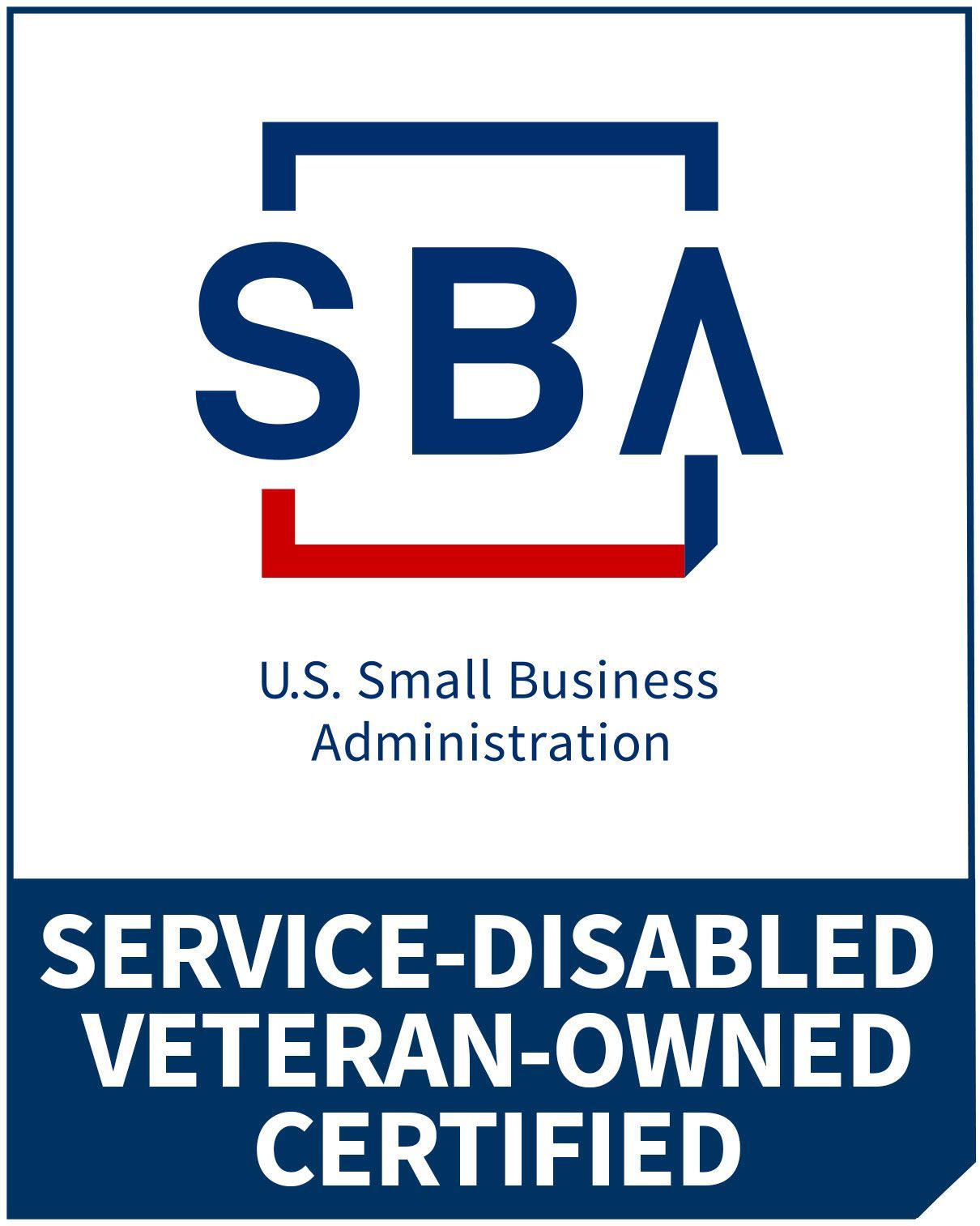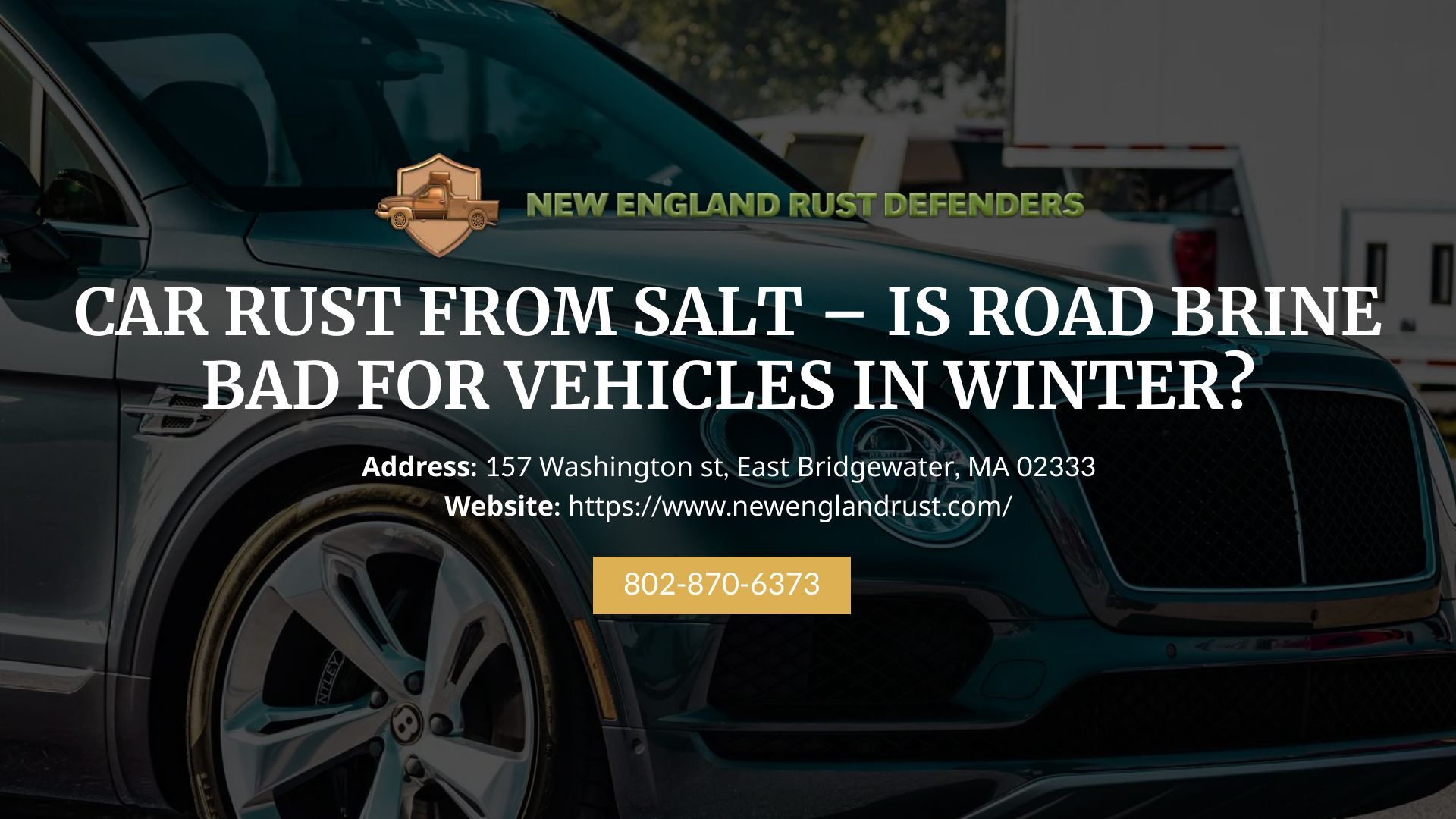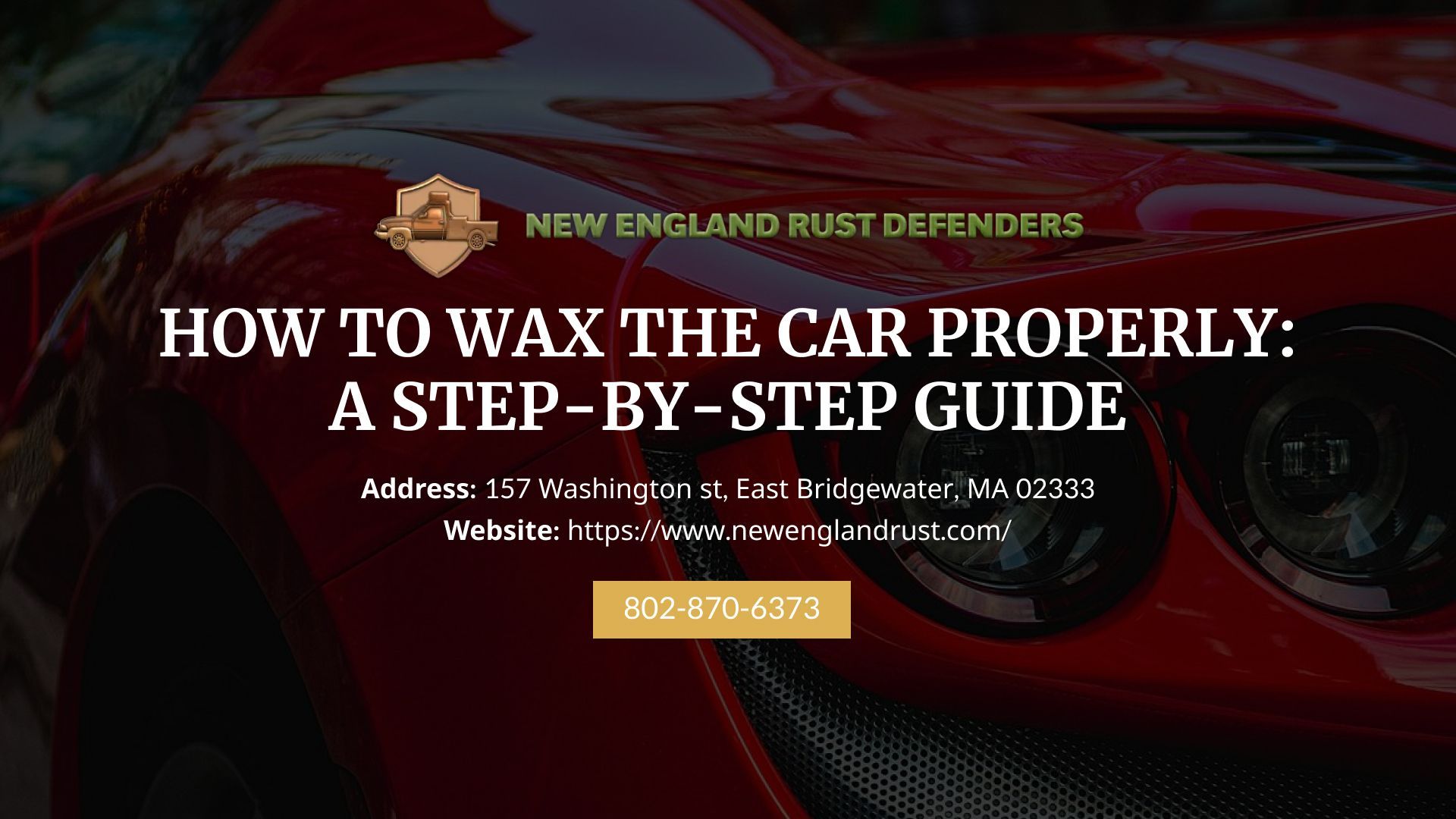What Is Undercoating For Vehicles? Pros, Cons & Cost Of Undercoating A Car
Rust can slowly destroy the underside of your car, particularly in places with snow, rain, and salt. An undercoat for vehicles can help protect against this.. In this guide,
New England Rust Defenders will discuss what undercoating is, along with its advantages and disadvantages, to help you determine the right services.
Key Takeaways
- Undercoating seals the bottom of your car so that moisture and road dirt can't get in.
- There are different types, like rubberized, oil-based, wax/paraffin, and asphalt-based coatings
- Pros include rust prevention, resale value, and noise reduction.
- Cons include price, possible warranty issues, and a messy application process.
- DIY options save money upfront, but getting it done professionally lasts longer and offers better preparation.
- Ideal for snowy, coastal, or salt-heavy regions where corrosion is a serious concern.

What Is Car Undercoating?
Car undercoating is a barrier sprayed onto the underside of your vehicle to protect it from rust and corrosion. It blocks moisture, road salt, and dirt from harming your car's undercarriage. Choosing the right undercoat for vehicles ensures long-term defense against corrosion, especially in salt-prone regions.
What Are The Different Types Of Car Undercoating?
All undercoating materials have different characteristics depending on your driving habits, climate, and cost.
| Type | Description | Best For | Maintenance |
|---|---|---|---|
| Rubberized | Strong, flexible, and helps reduce road noise. | Personal vehicles, daily drivers | Low – lasts long, less upkeep |
| Oil-Based | Creeps into seams and works on light rust. Reapply yearly for best results. | Older vehicles, DIY users | Needs yearly recoat |
| Wax/Paraffin-Based | Easy to apply and budget-friendly, but less durable. | Budget-conscious drivers, DIYers | High – reapply often |
| Asphalt-Based | Heavy-duty coating, very durable, used in harsh environments. | Trucks, commercial or off-road use | Low – long-lasting |
Undercoating Vs. Rust Proofing: What’s The Difference?
The terms are similar, but they have important differences:
| Feature | Undercoating | Rust Proofing |
|---|---|---|
| Location Applied | Vehicle’s underside | Inside panels, frame, and cavities |
| Formulation | Thick barrier (rubber, oil, etc.) | Penetrating oil or mist |
| Longevity | 1 – 10 years, depending on type | Typically yearly reapplication |
| Protection Depth | Physical road debris + moisture | Hidden rust in the frame or crevices |
| Cost | Moderate to high | Lower upfront |
Recommendation: Undercoating is best for those in salt-heavy or wet areas; rust proofing suits vehicles stored long-term or with hard-to-reach frame components. Some drivers choose both of them for full protection.
Pros Of Undercoating A Vehicle
Undercoating can be used to avoid loss in the value of cars operated in certain areas. It's a good investment for:
- Rust Prevention: If you're in a coastal area or somewhere that deals with a lot of snow, undercoating creates a barrier that keeps water, road salt, and dirt away from your car.
- High Resale Value: Rust-free vehicles command better prices. Undercoating keeps your car's frame and resale value intact.
- Noise Reduction: Rubber or asphalt coatings can reduce road noise, making your ride quieter and smoother.
- Ideal for Harsh Weather: Perfect for places with winter salt treatment, sea spray, or heavy rainfall. It gives peace of mind when your car faces year-round exposure.
Cons of Undercoating A Vehicle
Be aware of the following drawbacks before booking car undercoating services:
- High Ongoing Cost: While DIY kits start low, professional jobs cost significantly more. Some materials need annual touch-ups, adding to long-term costs.
- Rust Limitation: Undercoating prevents rust, but won't fix existing rust spots. You have to deal with those first.
- Application Issues: When doing it yourself, undercoating can drip, miss spots, or go on unevenly, which means it might not seal well.
- Warranty Risks: Some car makers could void parts of your warranty if you use aftermarket coatings. Check your manufacturer’s rules before getting it done.
How Much Does Undercoating A Car Cost?
The cost of undercoating depends on your vehicle type, the material used, and whether you go DIY or pro.
- DIY Kits: Costs between $50–$150. They offer short-term protection but need some prep and yearly touch-ups.
- Professional Undercoating: Costs between $300 and $1,000 or more. This includes preparing the surface, treating rust, and adding multiple layers. If you're asking “is undercoat worth it?”, consider that a one-time professional application can protect your car for years, saving thousands in potential rust damage..
Preventing Rust: More Tips
Undercoating is a part of rust prevention. The following are additional practical measures to keep rust at bay:
- Wash your undercarriage regularly, especially after snow or beach trips.
- Touch up dents and scratches promptly, as exposed metal attracts rust.
- Avoid driving through salty puddles in winter; salt accelerates corrosion.
- Clean well after beach or winter use to take out leftover salt.
- Inspect the underbody during oil changes or tire rotations to catch rust early.
Book A Car Undercoating Service Near Me Today
Don’t wait until rust sets in. Schedule your car undercoating service with New England Rust Defenders to protect your investment.






